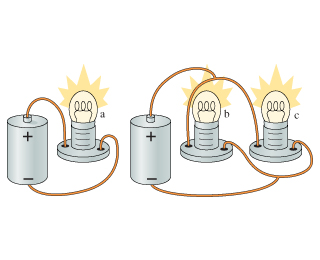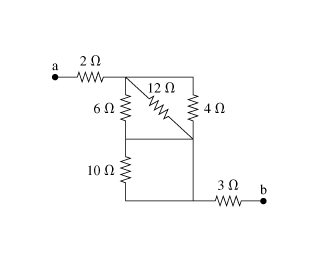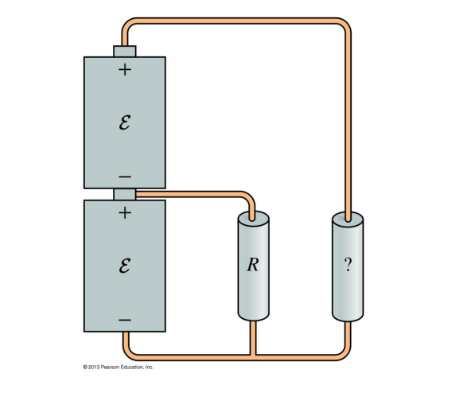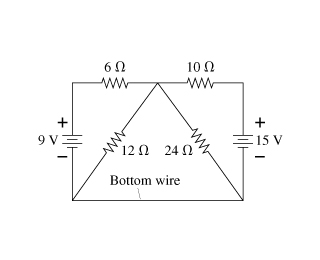You need a capacitance of 50uF, but you don’t happen to have a 50uF capacitor. You do have a 75uF capacitor. What additional capacitor do you need to produce a total capacitance of 50uF? Should you join the two capacitors in parallel or in series?
Series
What does a resistor do?
A resistor limits the flow of current.
What does a capacitor do?
Stores charge
Give an inequality for the current. 
(Assume same diameter, length, material for each wire)
I1 = I4 > I2 = I3
Find the Resistance Equivalence from point 1 to point 2

Req = 54.5
Req = ((1/300) + (1/200) + (1/100))^-1
You need a capacitance of 50uF, but you don’t happen to have a 50uF capacitor. You do have a 30uF capacitor. What additional capacitor do you need to produce a total capacitance of 50uF. Should you join the two capacitors in parallel or in series?
Parrallel, 20uF
How does adding resistors in series affect the resistance equivalence?
Increases the resistance equivalence
How does adding capacitors in parallel affect the capacitance equivalence?
Increases the capacitance equivalence
Same material, but different diameters
How does I1 compare to I2?

I2 = I1
What is the magnitude and direction of the current across the resistor?
I1 = .9A
To the left
A 2.0-cm-diameter parallel-plate capacitor with a spacing of 0.50 mm is charged to 200 V. What are (a) the total energy stored in the electric field and (b) the energy density?
a) 1.1*10^-7 J
b) .71/m^3
How does adding resistors in parallel affect the resistance equivalence?
Decreases the resistance equivalence
How does adding capacitors in series affect the capacitance equivalence?
Decreases the capacitance equivalence
Same material, but different diameters
Compare the drift speed in each segment
Vd1 >Vd2,
(J=nevd, since J1 > J2 )
Rank the I (current)
Assume all resistors have the same resistance
Ip >Is = It > Iq = Ir
Two 4.0cm x 4.0cm metal plates are separated by a 0.20-mm-thick piece of Teflon. (k=2.1)
A) What is the capacitance?
A) .15nF
Rank the brightness(Current) of each lightbulb.
Assume each light bulb has the same resistance, and each battery provides the same voltage.

Where is the energy stored in a capacitor?
The energy is stored in the electric field
Rank the resistance for each wire
(Same material )
Take your time
R4 > R1 = R5 > R3 >R2
(Depends on area and length)
Find the resistance equivalnce across point a to point b
Rab = 2 + 2 + 3 = 7
Two electrodes are held 0.10 mm apart and are attached to a 9.0 V battery. Without disconnecting the battery, a 0.10-mm-thick sheet of Mylar (k=3.1) is inserted between the electrodes. What are the capacitor’s potential difference, electric field, and charge (a) before and (b) after the Mylar is inserted?
b) Q = 62pC
What is the Resistance of the second resistor for each wire to the same current?
R2 =2R1
Use Kirchhoff's laws :)
To increase the charge in your circuit, add the capacitor in parallel.
The two segments of the wire have equal diameters but different conductivities. Current passes through this wire. If the conductivities have the ratio (Conductivity2/Conductivity1) = 2. What is the ratio of the electric field strengths in the two segments of the wire?

E2 / E1 = (1/2)
(J1=J2)
(o1E1=o2E2)
What is the magnitude and direction of the current in the bottom wire? Hint:(Set up loops and junction law)
Hint:(Set up loops and junction law)
I = .4A
to the right